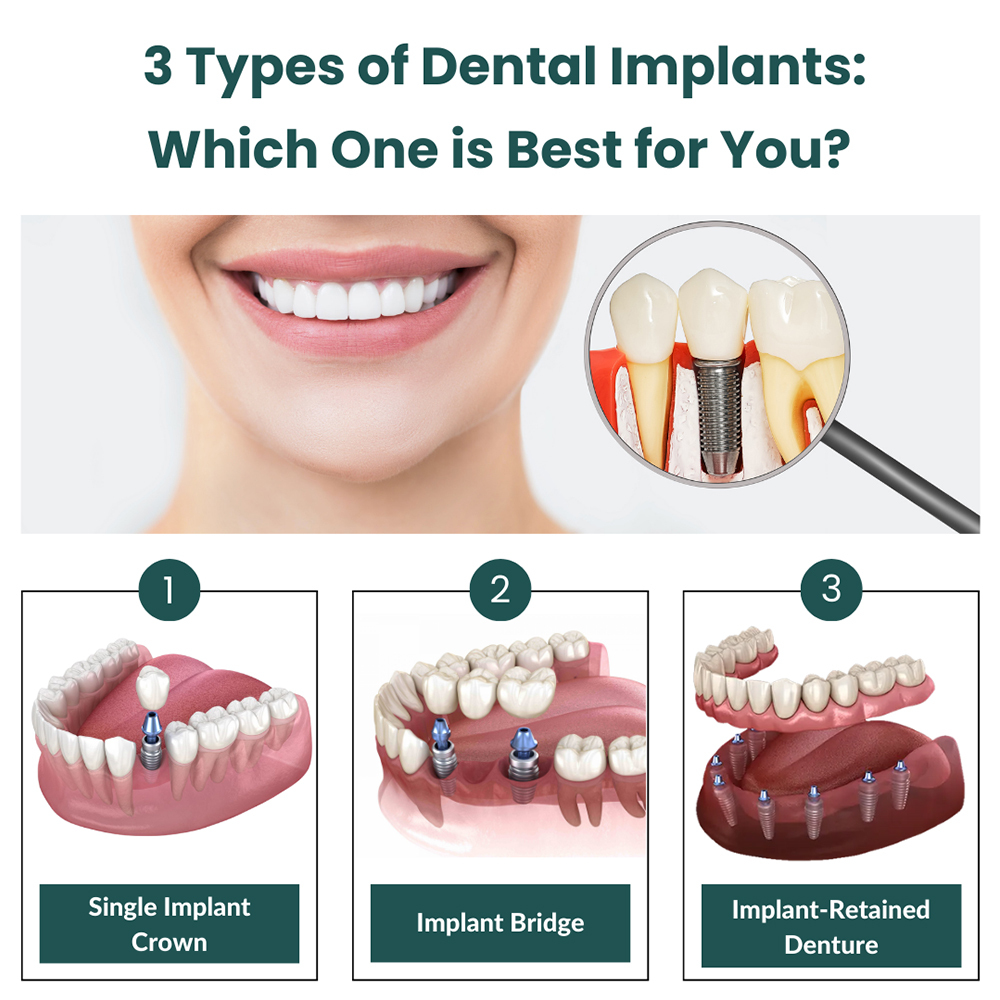
Dental implants are small enough to fit under your gum and are a great remedy for tooth loss. They are made of pure titanium and act like tooth roots. The greatest advantage of dental implants is that they can be personalized to suit your needs and tastes. There are three different types of dental implants. Let us see what they are.
Endosteal implants
These are the commonly used dental implants that fit most patients. However, you need a healthy jawbone for them to fuse. They are screw-shaped placeholder posts. They are placed into the jaw and protrude through your gum so the dentist can fit in the replacement tooth.
After the procedure, it takes a while to heal because it needs to fuse well together. Once your gums are healed, the false teeth are placed on the placeholder post. The dentist will make sure that the false teeth blend in well with the surrounding natural teeth.
Your oral surgeon or dentist will assess if endosteal implants are suitable for you by examining your general health, gum tissue, jawbone, and inability to wear dentures. You must also have good oral health and a fully grown jawbone. You should not use tobacco and be ready to wait for several months for the healing process.
Subperiosteal implants
Subperiosteal implants are another type of dental implant and can substitute Endosteal implants. It rests below the gum but over the bone, instead of into the jawbone. Your oral surgeon will place a frame with an attached post under your gum. To hold it in place, the gum must heal completely.
The replacement tooth is then secured to the post that protrudes from your gum. This surgical procedure is only possible if you do not have enough jawbone. Subperiosteal implants are also used for patients who do not want intensive oral surgery. If this is you, then go for this procedure.
With Subperiosteal implants, you can avoid bone grafting and can get healed faster provided you follow the post-operative procedures religiously. In some cases, you may be instructed to eat only soft foods. Smoking should also be avoided at all costs. During the follow-up visits, the dentist will check your gum growth and your healing process.
Zygomatic implants
The least common dental implant is the Zygomatic implant because it is a complicated procedure. It should only be used if your jawbone is not fit for any other type of dental implant. Zygomatic implants are placed in your cheekbone and not on the jawbone. It is commonly intended to replace your upper jaw teeth.
Zygomatic dental implants can be done to replace decayed or severely damaged teeth or an entire row of teeth. You may also be a good candidate if you have a loose tooth caused by periodontal disease. This procedure can also be used in conjunction with other traditional dental implant surgeries to replace both the lower and upper teeth.
It is estimated that the zygomatic implant surgical procedure has a high success rate of 98%. The most common postoperative complications are sinusitis, oro-antral fistula, and paresthesia, which can develop even after several years of operation. Periodical dental visits can mitigate some of these problems.

